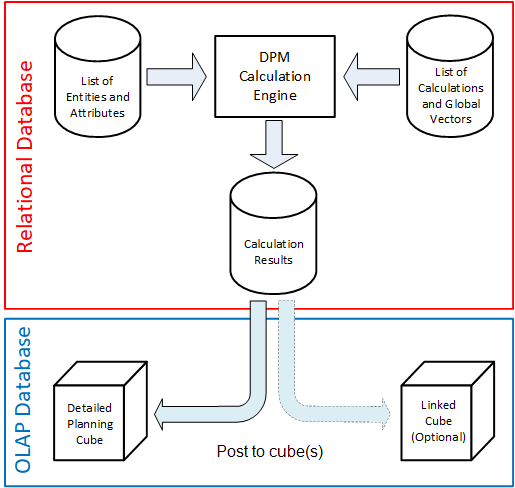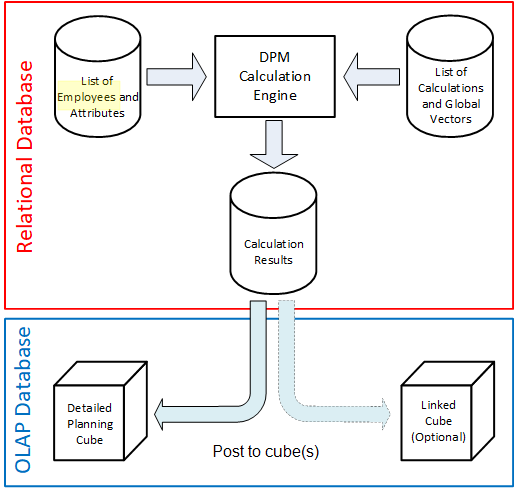Architecture of a detailed planning model
Detailed planning models have their own data architecture and cube types, distinct from those used for financial analysis.
At the most basic level, detailed planning can be thought of as two files: one a list of entities (for example, employees, vehicles, property leases) and the other a list of calculations. The entity file includes basic data (for example, salary information for each employee, sales data for each sales representative, and so on). The calculation file stores rules for computing entity-related expenses (for employees, this would be benefits, taxes, overtime, and so on). The two files are run against a "calculation engine," which calculates costs. You post the costs to the detailed planning cube, and optionally, to the financial cube, for analysis and reporting.
The following diagram shows the "generic" version of the DPM data architecture:

In Personnel Planning the List of Entities becomes the List of Employees:
